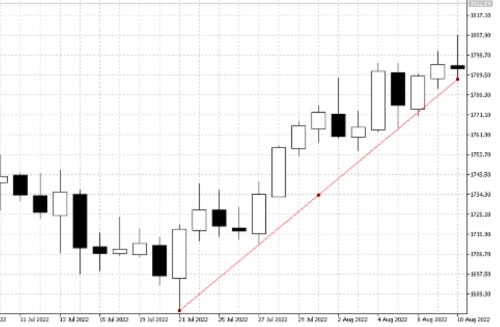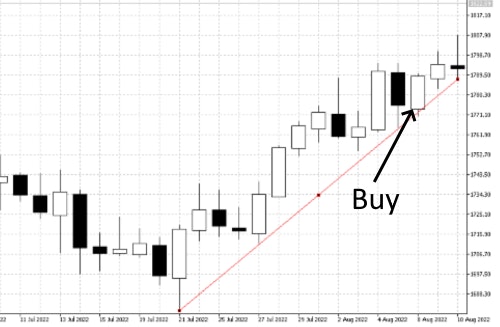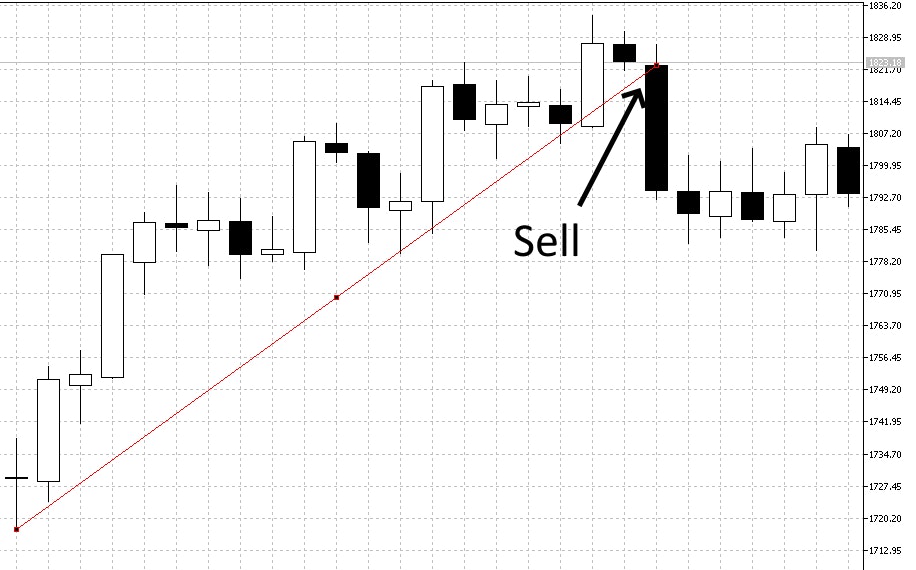Nick Goold
Trendlines are a popular technical analysis tool traders use to find trend and reversal entry points. While drawing trend lines is easy to understand, each trader can have different ways of deciding which highs and lows to use.
It's important to remember that trend lines are not always accurate and can be subject to false breakouts fakeouts. Therefore, it's essential to use other technical analysis tools and risk management strategies to confirm the trend and protect against potential losses.
Drawing a trend line involves the following steps:
1. Identify the trend
The first step is to identify the trend direction. An uptrend is characterized by higher highs and higher lows, while lower highs and lower lows indicate a downtrend.
2. Choose the highs or lows to connect
Following the trend's identification, the trader must choose two or more points to draw the trend line. Traders connect two or more higher lows in an uptrend or two or more lower highs in a downtrend.
3. Draw the trend line
Draw a trend line by connecting the chosen points to the chart's end to the right.

Trendline trading strategies
Follow the trend

Once the trend line is confirmed, the trader can use it as a trading signal. In an uptrend, the trader can look for buying opportunities when the price bounces off the trend line, and in a downtrend, the trader can look for selling opportunities when the price falls from the trend line. Place stop-loss orders below the trend line in an uptrend and above the trend line in a downtrend.
Reversal of trend

Trendlines can also signal the end of a trend and a trading opportunity. Should prices fall below the up trendline, this is a potential entry selling point or buy entry point should prices rise above the downward pointing trendline.
Trend line risk management
Stop loss
When trading an uptrend, the stop loss is placed below the trendline and above the trendline in a downward trend. Prices can be volatile around trendlines, so it is best to place the stop at least 3 to 5 pips below when day trading or 10 to 20 pips when swing trading when trading USDJPY, for instance. Other markets might have higher levels of volatility, so they require larger stop-loss levels.
A trailing stop where the stop loss reduces as the trade becomes profitable is helpful when trading a trend line. For example, the stop loss in an uptrend should stay below the trend line as the market rises and above a downward-pointing trendline.
Profit target: trend channel
In an uptrend connecting recent highs can form a resistance line. Therefore, the upper trend line can be a good point to place a profit target. Conversely, in a downtrend, the trend channel's lower band can act as a support level and profit target.
Profit target: support and resistance
It can be hard to forecast the end of a trend, and best to extend your profits as long as possible. However, should prices stop at resistance in an uptrend and turn lower, it can be beneficial to exit your trade.
Trend line mental control
Trend lines are subjective indicators, so it can be stressful if your trade ends with a loss. It is easy to doubt your analysis and lose confidence in your trading skills. There is no perfect trend line that makes money all the time. Avoid looking at other traders' trend lines, trust your analysis, and avoid worrying about short-term losses.

